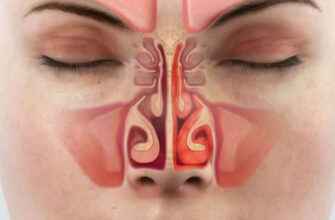Ear infections are a common ailment that can affect people of all ages, but they are most common in children. They occur when the middle ear becomes inflamed due to a bacterial or viral infection. In this article, we will discuss the causes, symptoms, and treatment of ear infections.
What Causes Ear Infections?
Ear infections are typically caused by a bacterial or viral infection that enters the middle ear through the eustachian tube. The eustachian tube is a small tube that connects the middle ear to the back of the throat. When this tube becomes blocked, fluid can build up in the middle ear, leading to an infection.
Symptoms of Ear Infections
The most common symptoms of ear infections include ear pain, fever, difficulty hearing, and drainage from the ear. Children may also experience irritability, difficulty sleeping, and tugging or pulling at their ears.
Types of Ear Infections
There are three main types of ear infections: acute otitis media, otitis media with effusion, and chronic otitis media. Acute otitis media is a sudden onset of infection that causes pain, fever, and fluid buildup in the middle ear. Otitis media with effusion is a buildup of fluid in the middle ear without infection, while chronic otitis media is a long-term infection that can lead to hearing loss.
Who is at Risk for Ear Infections?
Children are more prone to ear infections due to their developing immune systems and smaller eustachian tubes. However, adults with allergies, sinus infections, or a compromised immune system may also be at risk.
Diagnosis of Ear Infections
A doctor can diagnose an ear infection by examining the ear with an otoscope. They may also use a pneumatic otoscope to test the movement of the eardrum or perform a tympanometry test to measure pressure in the middle ear.
Treatment for Ear Infections
Treatment for ear infections typically involves antibiotics for bacterial infections or pain relievers for pain and fever. In some cases, a doctor may recommend ear drops or surgery to remove fluid or repair damage to the eardrum.
Prevention of Ear Infections
To prevent ear infections, it’s important to keep the ears clean and dry, avoid secondhand smoke, and practice good hand hygiene. For children, breastfeeding and keeping up to date with vaccinations can also help prevent infections.
Complications of Ear Infections
If left untreated, ear infections can lead to complications such as hearing loss, a ruptured eardrum, and the spread of infection to other areas of the head and neck.
When to See a Doctor
It’s important to see a doctor if you or your child experiences severe ear pain, a high fever, or symptoms that last longer than a few days. Additionally, seek medical attention if you notice drainage from the ear or if your child is pulling or tugging at their ears.
Home Remedies for Ear Infections
While home remedies should not replace medical treatment, there are some steps you can take to ease symptoms of ear infections. These include applying a warm compress to the affected ear, using over-the-counter pain relievers, and staying hydrated.
Conclusion
Ear infections are a common ailment that can cause discomfort and pain. If you or your child experiences symptoms of an ear infection, seek medical attention promptly to prevent complications and promote healing. By taking steps to prevent infections and practicing good hygiene, you can also help reduce the risk of developing ear infections in the future. Remember, early detection and treatment are key to preventing complications and promoting a full recovery.











